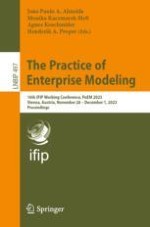This book constitutes the proceedings of the 16th IFIP Working Conference on the Practice of Enterprise Modeling, PoEM 2023, which took place in Vienna, Austria, during November 28 - December 1, 2023.
PoEM offers a forum for sharing experiences and knowledge between the academic community and practitioners from industry and the public sector. This year the theme of the conference is Enterprise Modeling in the Circular Economy.
The 12 full papers presented in this volume were carefully reviewed and selected from a total of 34 submissions. They were organized in topical sections named as follows: Enterprise modeling and artificial intelligence; emerging architectures and digital transformation; modeling tools and approaches; and enterprise modeling at work.
